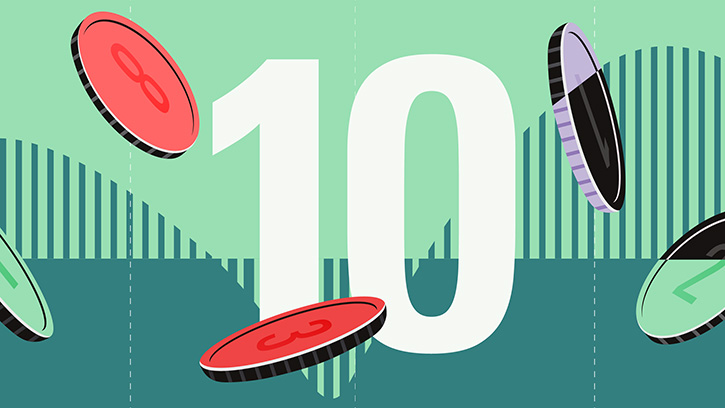Housing Data Stabilising, but Still in Intensive Care
Housing starts managed their second consecutive month of improvement, assuaging fears that the housing starts would continue to fall even after the initial negative effects of the expiration of the homebuyers' credit. Housing starts jumped 10.9% to 598,000 units in August on a seasonally adjusted annual rate basis compared with July.
However, I wouldn't get too excited about that number; housing starts remain painfully close to this recession's low point in April 2009 of 477,000 units and the year-to-date low of 539,000 units in June. Morningstar's housing team believes that natural demand for housing is about 1.5 million units based on normal population growth and normal wear and tear. At its peak in February 2005, starts were a record 2.2 million units. Although poor construction data hurts GDP, fewer new homes on the market should help reduce the total inventory of homes to be sold.
Existing home sales also came in better than anticipated, growing 7% sequentially to 4.1 million units on a seasonally adjusted annual rate basis. Like housing starts, this is still an extremely depressed number, but the market took some comfort from the fact that the housing market has stabilised and is no longer in the free-fall induced by the expiration of the homebuyers' credit. Our housing team believes the longer-term norm is for 4.5 million-5.5 million homes to change hands annually. The number got as high as 6 million-plus units in the buying frenzy resulting from the homebuyers' credit.
European Manufacturing Sector Lays an Egg
The markets remain hypersensitive to overseas news as a larger-than-expected decline in the overall European purchasing managers' index triggered a sell-off in European and US markets. Given the positive role of manufacturing and exports in this recovery, the market's reaction is not totally unfounded. However, I should point out the index is still indicating growth at a reading of just over 53, with any reading above 50 indicating expansion.
The September reading reflects a reduction from 56.2 the prior month. Even powerhouse Germany's index fell to 54.8 from 58.4 sequentially. Given all the global linkages, a European decline does not bode well for the US index, scheduled for Oct. 1.
US PMI Can Give a False Alarm
At market troughs, the US PMI manufacturing indexes are outstanding indicators of economic turning points. Interpretation of the PMI index gets a little trickier at economic tops. The lead times between PMI peaks and economic decline can be highly variable and often provide false readings.
The 1991-2001 expansion really highlights the dangers of using the US PMI to predict recessions. During that expansion the monthly PMI dropped below 50 on six separate occasions, with only the last move correctly signalling an oncoming recession.
Using a less jagged three-month moving average, the index average has fallen below 50 six times between 1990 and 2010, which compares to only three recessions. It did a little better forecasting industrial production, but even here the record was not perfect. In the expansion of 2001-07, the PMI peaked in May of 2004 and moved persistently down for the rest of the expansion. The index crossed below the magic 50 level in January 2007, about a year before the economy peaked.

Why doesn't the PMI work so well at forecasting peaks in the real economy? Manufacturing as a percentage of the economy has been shrinking for some time, and that provides some clue as to why the index may have lost some of its value.
Secondly, the index is a dispersion index, meaning it just reports the number of companies seeing ups and downs in their businesses without a focus on the magnitude of the those ups and downs. Typically the base of companies showing growth narrows during the course of a recovery. The real trick is trying to figure out the difference between an unhealthy narrowing (tech equipment in 1999 and 2000) and a return to a normal expansion, where not every company can expect to see growth and be above average. There are always industries in secular decline--such as tobacco, newspapers, and landline phones--that will weigh negatively on the index. In a recovery from a deep recession, even these declining industries might report temporary growth, which is why the index often jumps to its recovery high very early on.
Nevertheless, the PMI index is a valuable tool in an economist's arsenal. However, the economist's interpretation needs to be a lot more nuanced than the trader who sees an index trending down and automatically hits the panic button. One needs to consider company comments, capacity utilisation, what industries are seeing the slowing, and what components of the index are moving to properly interpret the data.
The PMI index has slowed in both the US and the rest of the world, and it looks like the index could slow more over the next month or two. As I showed last week, I think the weaker manufacturing data reflects slower consumer spending in May and June; spending seems to be at least a little better now, and that will in turn drive manufacturing and economic growth later this year. But one cannot rule out the possibility that consumers are spending more of their dollars on services. In that case the economy could continue its improvement without massive improvements in manufacturing. Given that services--a much larger part of the economy--has been a bit of a laggard this recovery, a catch-up move on the services side would not come as a surprise to me.























